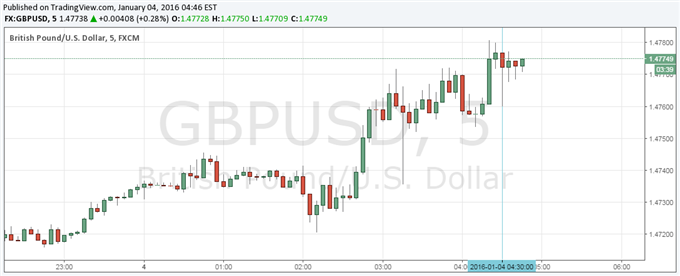Talking Points:
- UK’s Markit/CIPS Manufacturing PMI fell to 51.9, below the 52.8 expected
- Manufacturing to make marginal contribution to economic growth in Q4 of 2015
- British pound trading mixed on the news
The British Pound traded mixed versus other major currencies (at the time this report was written) after today’s Markit/CIPS Manufacturing PMI showed manufacturing growth cooled. The British Pound was initially unchanged versus the US Dollar, but traded lower versus the Yen as risk aversion swept the market. The manufacturing diffusion index, compiled by Markit Economics, fell to 51.9 from November’s revised reading of 52.5. The number was below economists’ expectations of 52.8, and signaled the lowest reading in three months. A number above 50 points to an expansion, below 50 to a contraction.
Markit remarked that the report suggests manufacturing will only make a marginal positive contribution to economic growth in the final quarter of 2015. Markit further commented that the consumer goods sector remained the prime driver of production along with new order growth, despite seeing its expansion slow over the month. The survey showed that input prices fell at a “sharp pace” during December.
Perhaps the most interesting comment in the report was the suggestion that if the ongoing mix of subdued growth and weak price pressures remains prevalent elsewhere in the economy, the BoE will likely continue to push any potential rate increase later into 2016. With that being said, the report followed heavy declines in European equity prices on the back of China’s CSI 300 -7% drop during the Asian session, which set off the new circuit-breaker to suspend trade. As risk aversion swept the financial markets start of 2016 trade, the market seemed to trade mixed on the possible implications for BoE policy.







